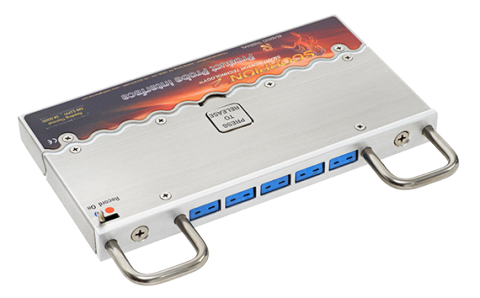Explore what is happening inside your commercial bakery ovens with the SCORPION® 2 Heat Flux Sensor and our other innovative sensors that can help you improve your processes and products.
Reading Thermal, headquartered in Sinking Spring, Pennsylvania, has focused on researching the commercial baking process for more than 25 years. We manufacture and support the state-of-the-art SCORPION® 2 Data Logger, which monitors actual in-process conditions and gets the critical information you need to correct problems and maintain optimum process control.
What is Oven Heat Flux?
Oven heat flux describes the amount of energy transferred per unit area per unit time from or to a surface. It is the best non-intrusive indicator of how the oven performs during baking in terms of the product.
Heat transfer follows three different modes of heat transfer during baking – radiation, convection, and conduction – and heat flux involves all three components. Each product will have a unique mix of these components and its own heat flux profile. There is no single optimal heat flux profile for all products.
Why Is Heat Flux Profiling Important?
The characteristics of specific products are defined by the amount and type of heat applied to the product during the baking process. The differences explain why one oven bakes differently than another. And analyzing and controlling these differences are critical to understanding how the finished characteristics of a product will be affected.
Many bakeries utilize heat flux profiles when trying to produce the same product on two different lines or transferring product from one line to another. Both lines will produce the same product when the heat flux profiles match.
The SCORPION® 2 Heat Flux Sensor measures convective and radiant heat fluxes at the product level and displays the results in Btu/hr·ft2 or W/m2. Radiant and conductive heat are absorbed by the band, which serves as the conduction mechanism for the product. The sensor travels with the product through the process with the oven under full load, producing a detailed profile of heat flux components the product experienced.
Analyzing the Results
From above the conveyor, the Heat Flux Sensor measures the flow of energy that the product experiences and identifies which modes of heat transfer are predominant.
The sensor produces raw data consisting of various temperature measurements at exact locations in the sensor assembly. A mathematical model representing the physical measurement system is applied to the measured values via the SCORPION® Software (SV8). The resulting heat flux components – Qradiant, Qconvective, and Qtotal – are displayed in a 2D Line Graph against time, distance, or % travel through the process.
Global bakeries trust the SCORPION® 2 Data Logger and Heat Flux Sensors from Reading Thermal for measuring the critical parameters in their commercial ovens – heat flux, temperature, air velocity, and humidity. Contact us online, or call (610) 678-5890 Ext. 2 to explore our line of innovative products.

